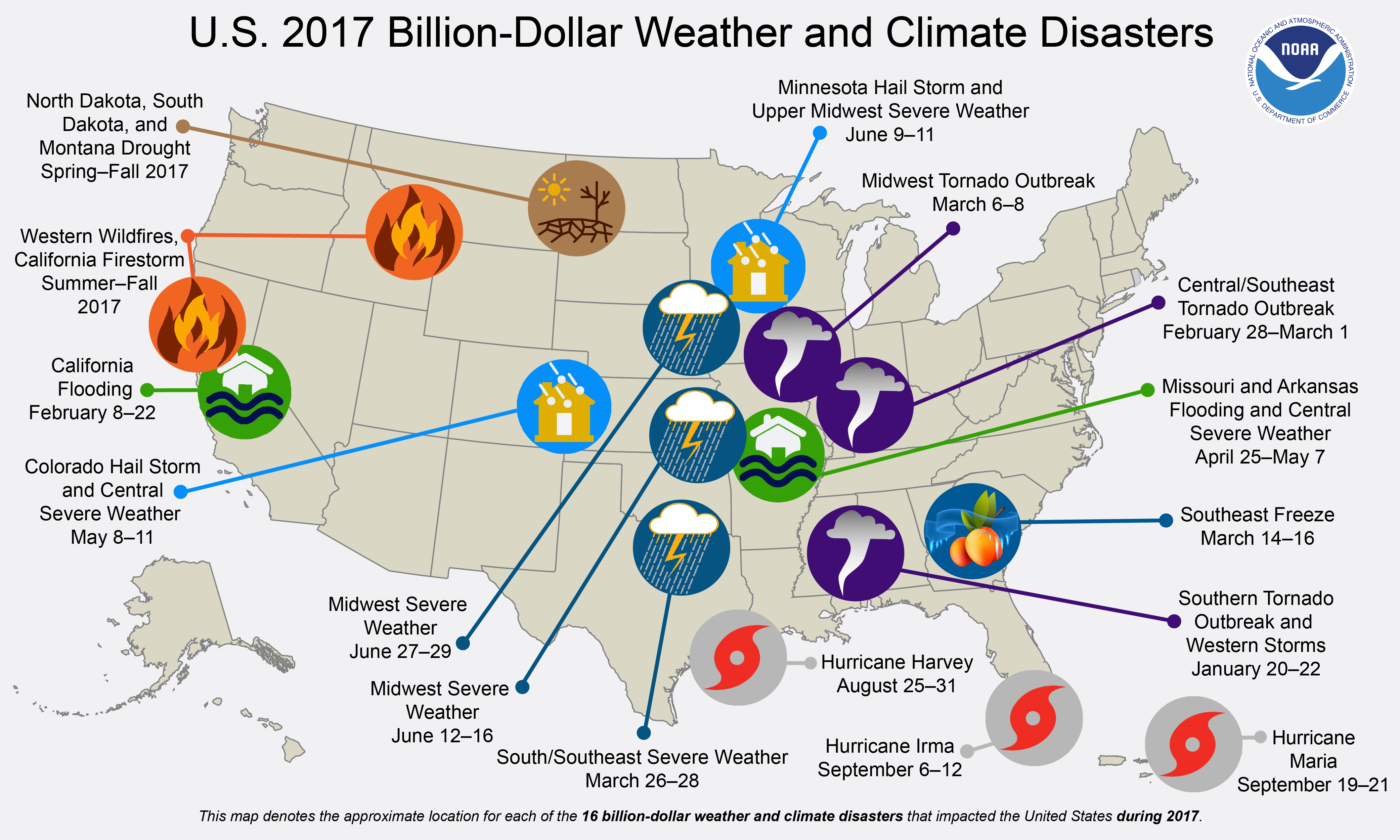Climate-resilient agriculture requires both global and local action. Here’s how.
2017 saw 16 weather and climate disasters that cost a billion dollars or more, from freezes and hail, to fires and flooding. Agricultural losses from Hurricane Harvey, Hurricane Irma, Hurricane Maria and California wildfires alone totaled more than $5.7 billion – and counting.
With extreme weather becoming more common, we all have a stake in building a food system that can absorb and recover from such stress. A resilient food supply equips farmers with the tools and incentives to find climate-smart solutions, and that requires action globally and locally.

Global governance
International forums such as the United Nations Framework Convention on Climate Change (UNFCCC) and the Global Alliance for Climate-Smart Agriculture drive action at multiple scales and across multiple sectors, a necessity for making resilience a reality.
A recent decision in the UNFCCC elevated the importance of climate-resilient agriculture. The UN recognized the need to balance global food security and social and economic wellbeing with the need to reduce emissions through soil and nutrient management, livestock production, and carbon sequestration in crop and rangelands. This balance is as critical to a large-scale farmer in the Corn Belt as it is to a small-scale farmer in East Africa.
Global private sector investment is also building resilience into the food system. Multinational companies are setting targets for reducing their greenhouse gas footprints and engaging their suppliers to reduce emissions from fertilizer use, soil management and livestock production. Doing so manages supply chain risk, meets changing consumer and investor expectations and often benefits the bottom line as well.
Local engagement
While global platforms create momentum, resilient food production must still adapt to local soil, biology and socioeconomic conditions.
Farm Bill-funded USDA programs such as the Conservation Innovation Grant and the Regional Conservation Partnership Program prioritize incentive-based, locally driven solutions. So too do USDA Climate Hubs, which make science-based, regionally specific information and technology available to farmers.
California’s approach to building agricultural resilience includes conserving working lands, mitigating agricultural greenhouse gases and managing the sustainability of water resources. The state has invested in research and incentives to help farmers improve the efficiency of irrigation systems, promote healthy soils and reduce emissions from the dairy sector.
States such as Iowa, Oklahoma and Maryland are co-investing with farmers in the adoption of conservation practices such as cover crops to both improve climate resilience and reduce the impact of agriculture on water quality.
[Tweet “2017 showed why climate-resilient agriculture is necessary. Here’s how global and local action can speed it up.https://www.edf.org/XE9”]
Adaptive management
A growing body of science points to few absolutes for balancing mitigation, adaptation and productivity across all crops, livestock and regions of the world. While there are some win-win solutions – boosting irrigation efficiency reduces water use and greenhouse gas emissions – there can be trade-offs, for example, the impact of tillage practices on greenhouse gas emissions and water quality in different regions.
Adaptive management can help deal with these uncertainties. The dynamic approach encourages experimentation, engages stakeholders and empowers them to act. Global knowledge-sharing can help identify opportunities for implementing adaptive management locally.
Building resiliency will be an ongoing, complex process. Adaptive management will be critical as will centering local and global actions on those who produce our food.
While agriculture contributes significantly to climate change, it is also one of the sectors most directly impacted by a changing climate. The most effective way to build a resilient food and agriculture system is to provide farmers with tools, incentives and resources to innovate and adapt.
Related:
Why we need a new era of collaborative conservation >>
The next Farm Bill can jump-start agricultural conservation. Here’s how. >>
3 ways the Farm Bill can protect croplands from extreme weather >>













2 Comments
Thanks. I like the tone of this article. It doesn’t attack anyone. It has useful information and points to sources of more information.
To be frank, EDF does not have a great reputation among many farmers and I doubt if I will source you, but I will use this information.
Thank you for the kind words. I’m glad the information in the post was helpful.
EDF works collaboratively with many farmer partners. Conservation solutions will only come to scale if they make economic sense for farmers. Sustainability and profitability must go hand-in-hand.